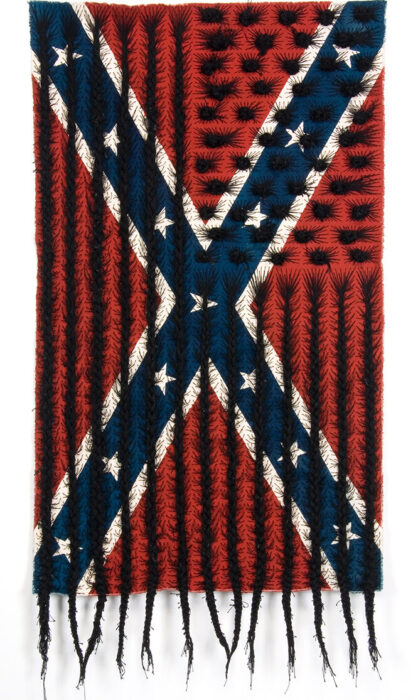When the Democrats and Republicans Switched Ideas

Folk who love to argue with black folk love to say that Republicans ended slavery. (Those folk include black folk too.) While that’s a true statement, it’s also a misleading statement. What Republicans stand for today…that’s what Democrats stood for back then. Somewhere along the line, they switched ideas.
What had happened was…
First, we had the Federalists and the Anti-Federalists.
The federalists thought the federal government should have more power than state governments. They also wanted to keep a strong relationship with Britain, who we’d beat in the American Revolutionary War. And they thought the Constitution should be left up for interpretation and that we needed a Bank of the United States to control inflation and encourage investment. Racism, classism, and patriarchy was up in there, of course, as they felt only wealthy/educated white men should govern the country to avoid corruption.
The anti-federalists thought a strong central government would step on individual rights, so they were against that. They believed in direct election of government officials, short-term limits for politicians, and that we should have a solid relationship with the French instead of the British. They fought for the Bill of Rights to make sure that individuals wouldn’t lose their most important rights.
Then came the Democratic-Republicans.
The Federalist Party ended after the war of 1812 against the British down in New Orleans. It was because they couldn’t agree, and after Britain broke the treaty and we beat ’em back, the Federalists argument wasn’t making much sense no mo. This who y’all wanna be allies with?!
The Anti-Federalists had become the Democratic-Republicans. We only had one party at that point. In the election of 1824, four Democratic-Republicans ran against each other. John Quincy Adams and Andrew Jackson were the last two candidates standing.
Then we got Democrats and Whigs/Republicans.
Andrew Jackson lost but planned to run again in the next election. So him and his supporters created the Democratic Party to separate themselves from the rest. They wanted to do away with the electoral college and have direct votes instead. He was also against the Bank of the United States. As politicians do, he looked out for his supporters, his fellow white Southerners. He made sure black folk stayed in slavery and Native Americans who stood in their way were killed.
He personally benefited from slavery. Having grown up poor in the backwoods of Carolina, he gained wealth one hostage at a time. He had about 10 before he became president, then worked his way up to owning more than 160 of ’em. He treated ’em brutally, even paying police $100 to capture any who had runaway with an extra $10 per lash on their back.
As far as Native Americans, he started the Indian Removal Act, which waged war against Native Americans in parts of Georgia, Alabama, and Mississippi who refused to give their land up. This led to the Trail of Tears, which sent ’em to reservations as far away as Oklahoma.
Jackson’s opponents started the Whig Party. Even that party was divided. Some supported slavery and others didn’t. Those in the Whig Party who were against slavery founded the Republican Party in 1854.
Difference between Democrats and Republicans back then
The Democrats, at first, were mainly white southerners who benefited from slavery and fought to keep it legal. The Republicans, at first, didn’t care about slavery in the South. They wanted to keep it from spreading out West though, where the U.S. was starting to snatch more states.
Congress has two parts: the Senate and the House of Representatives. Each state has two senators. For the House of Representatives, though, it depends on how many people live in the state. The bigger the population, the more representatives they get. The more representatives a state has, then the more political power it has.
That’s how the 3/5 rule came into being. Republicans said slaves shouldn’t count as people. Democrats said they should. They negotiated by saying hostages (aka slaves) would count as 3/5 a person instead of a whole person. That was in 1787. Democrats figured they’d just traffic even more humans from Africa, so in 1808 Republicans saw to it that importing slaves became illegal. You could still have ’em, but you couldn’t bring any new ones into the country.
The Republicans knew that slavery out west would give Democrats even more wealth and political power. (California, for instance, didn’t become part of the U.S. until 1850 and Arizona didn’t until 1912.) So they fought hard to stop that.
The Democrats started getting mad.
Abraham Lincoln, a Republican, became president in 1860. He freed slaves as a war strategy for the Civil War. Black folk would help the Republicans if they knew slavery would end if they won. If slavery ended, then Democrats would have less political power. It worked.
After the Civil War came Reconstruction Era, which gave black men the right to vote and run for office. That pissed off Democrats. Also during Reconstruction, the Republican Party started getting rich off the industrialization in the North. Now federal spending benefitted them. By the early 1900s, the Republicans were seen as the rich party.
The stock market crashed in 1928 and folk blamed the Republicans for it. This made room for Franklin D. Roosevelt (a Democrat) to win. He created the New Deal in response to the stock market crash to create more jobs for folk to earn money. A lot of his fellow Democrats weren’t feeling that though.
Here’s where Democrats and Republicans started switching ideas.
Then came President Truman in 1948 who stated his plans to help the civil rights effort at the national convention. Democrats walked out and formed the “Dixiecrats.” This was the beginning of the hat-switch. Most were still Democrats though, mainly because they viewed the Republican Party as “Lincoln’s party.”
Then came President Lyndon B. Johnson in 1963, who became president after Kennedy was killed. He was a Democrat from Texas. Yet, he put the nail in the coffin for southern Democrats when he signed the Civil Rights Act then the Voting Rights Act. Everything Democrats had done during Reconstruction to hold black folk down, those two acts reversed it. (They found new ways to oppress though.) The fact that black folk were voting again really pissed off the Democrats.
By the time Nixon got elected in 1969, Republicans and Democrats had officially switched hats.


